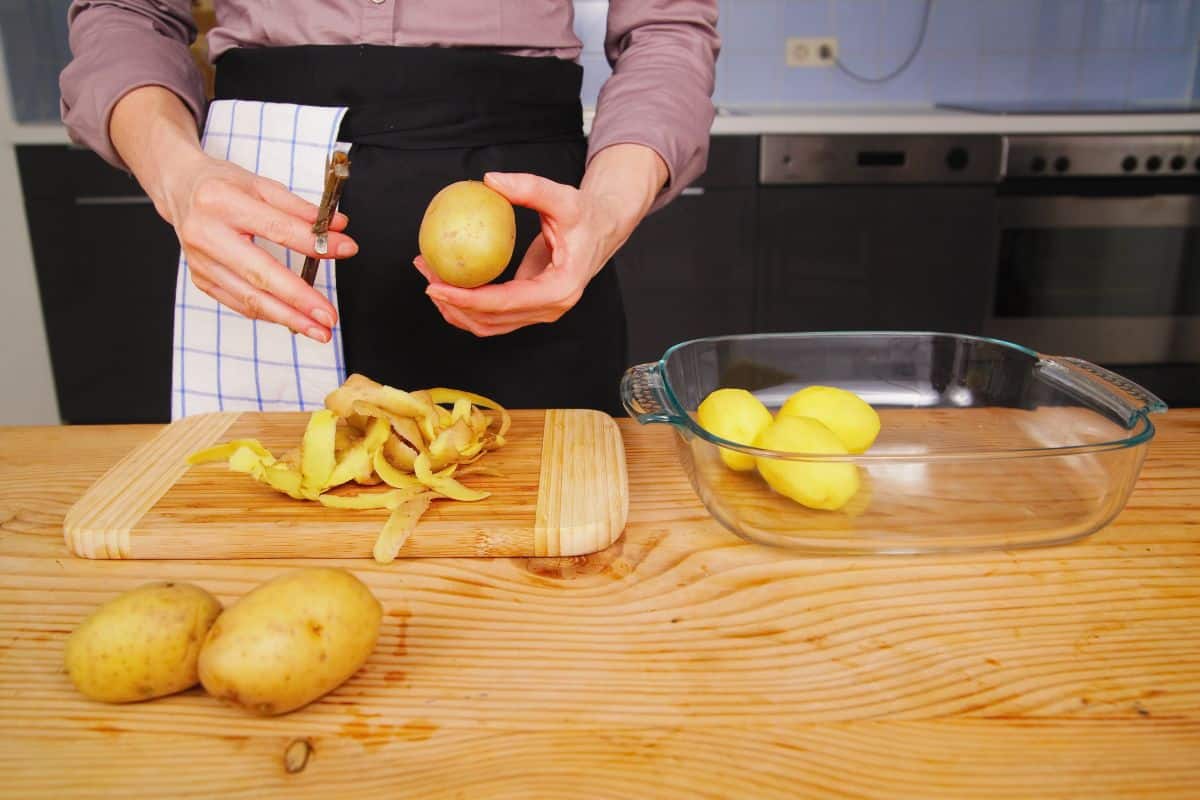Most home cooks unknowingly cut their potatoes’ lifespan in half by following outdated storage advice. While traditional wisdom suggests keeping these versatile tubers in pantries or cupboards, recent food safety research reveals a surprising truth about optimal potato preservation.
Revolutionary changes in potato storage guidelines
The UK Food Standards Agency transformed its official storage recommendations in early 2023, overturning decades of conventional wisdom. Previously, experts advised against refrigerating potatoes due to concerns about sugar conversion and acrylamide formation during cooking. These worries stemmed from the belief that cold temperatures would trigger harmful chemical reactions.
However, comprehensive studies by the Committee on Toxicity of Chemicals in Food, Consumer Products, and the Environment debunked these fears entirely. Kate Hall, founder of “The Full Freezer” and renowned food expert, explains that scientific evidence now supports refrigerator storage as the superior method for extending potato freshness.
The research demonstrated that temperature-controlled environments significantly outperform traditional storage methods. While pantry storage typically provides two weeks of freshness, refrigerated potatoes maintain their quality for three to four weeks. This discovery challenges everything we thought we knew about proper root vegetable preservation.
Similar principles apply when growing your own produce, as demonstrated in guides about how to harvest potatoes. Understanding storage begins with understanding the entire lifecycle of these remarkable vegetables.
Why moisture control determines storage success
Food safety expert Sylvia Anderson emphasizes that moisture elimination represents the most critical factor in successful potato storage. Excess water creates ideal conditions for bacterial growth and accelerated decomposition, transforming fresh tubers into rotting produce within days.
The preparation process requires careful attention to surface moisture. Before storage, gently wipe away any visible dirt without washing the potatoes completely. This approach maintains the natural protective skin while removing contaminants that could promote decay.
Professional storage techniques involve several key steps :
- Select potatoes with firm, unblemished skin
- Remove excess soil with a dry cloth
- Inspect for cuts or bruises that might harbor bacteria
- Ensure complete surface drying before refrigeration
- Avoid washing until immediately before cooking
Understanding these principles becomes especially valuable during winter months when fresh produce availability fluctuates. Resources like seasonal guides to winter produce highlight how proper storage maximizes nutritional value throughout colder seasons.
Ethylene gas management for extended freshness
Potatoes naturally release ethylene gas, a plant hormone that accelerates ripening and decay in surrounding produce. This invisible chemical compound creates a domino effect, causing nearby fruits and vegetables to deteriorate rapidly when stored together.
Strategic separation becomes essential for maintaining freshness across your entire refrigerated inventory. Onions, apples, and other ethylene-sensitive items should never share storage space with potatoes. This isolation prevents cross-contamination and preserves the quality of multiple food items simultaneously.
The gas production varies among different root vegetables, making storage planning crucial for home gardeners. Those interested in expanding their knowledge might explore comprehensive guides to turnips or learn about different radish varieties, which have similar storage considerations.
Container selection plays a vital role in gas management. Perforated bags or containers with ventilation holes allow ethylene to escape while maintaining optimal humidity levels. This balance prevents both moisture accumulation and excessive drying.
Optimal refrigerator storage techniques
Paper towel lining represents the gold standard for professional potato storage. Place clean paper towels at the bottom of your storage container, creating an absorbent barrier that captures any residual moisture while allowing air circulation.
Clear refrigerator shelves provide the ideal location for potato containers. Avoid crisper drawers, which often maintain higher humidity levels unsuitable for long-term potato storage. The main refrigerator compartment offers consistent temperatures and better air circulation.
Temperature stability proves crucial for preventing sprouting and maintaining nutritional content. Modern refrigerators typically maintain temperatures between 35-38°F, creating perfect conditions for extended potato preservation. This controlled environment prevents the temperature fluctuations common in pantry storage.
For gardening enthusiasts who grow their own vegetables, understanding storage connects directly to cultivation knowledge. Learning how to grow pinto beans or discovering tomato growing requirements provides valuable insights into produce handling from garden to table.
The container should allow easy inspection without excessive handling. Choose transparent or semi-transparent materials that enable visual monitoring for signs of sprouting or deterioration. Regular checks every few days ensure early detection of any storage issues.
Professional chefs often recommend rotation systems where older potatoes are used first, similar to principles used in ground tomato planting where timing affects harvest quality. This first-in, first-out approach maximizes freshness and minimizes waste throughout your storage period.

